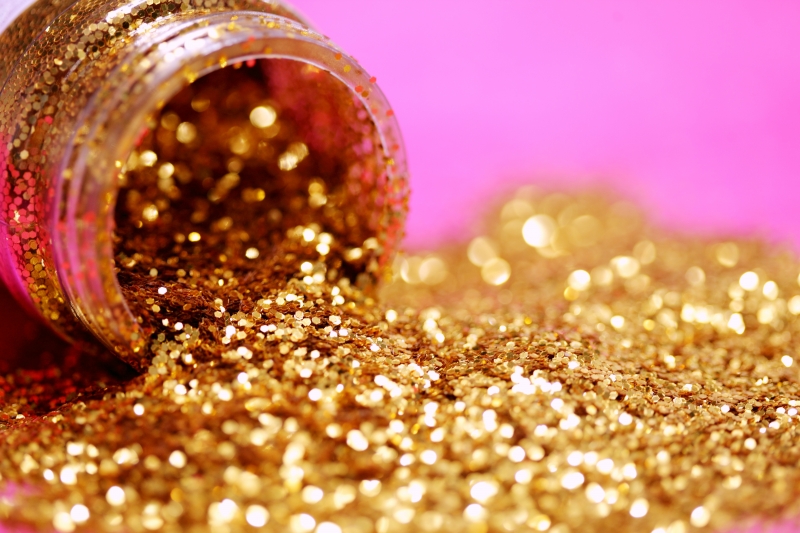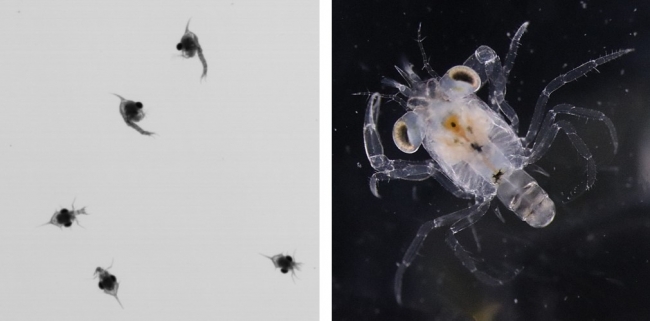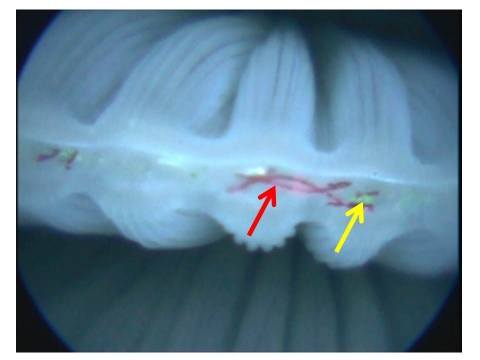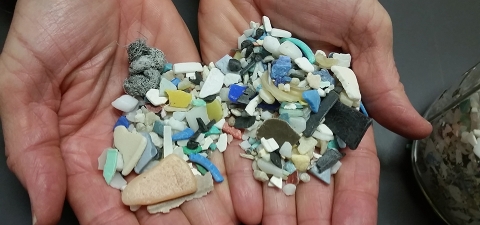The holidays have arrived and that means party decorations and celebrations! Last week, the Marine Debris Program highlighted how to “green” your travel plans, how to create zero waste gifts and gift wrapping, and how to host and decorate for holiday parties that celebrate the Earth too. As we wrap up 2019, we have one more piece of celebration advice: try a glitter-free New Year.
Think of the last time you used glitter. It may have been in a shimmery beauty product, on a piece of clothing for a party, or as shiny decorations. But did you know that glitter is made of a plastic called polyethylene terephthalate (PET)? People may not realize that glitter is a tiny piece of plastic with an outside reflective layer, often aluminum, to make it shine. This means that glitter can become a type of marine debris: single-use microplastic.

Glitter is often used during holidays, festivals, and parties. It sticks to hands, gets washed down the drain, and slips through filters in wastewater treatment plants. It can fall on the ground during a celebration only to be later washed into local streams or rivers. A recent study, published in the Marine Pollution Bulletin, found glitter in a number of samples taken from sewage sludge, urban dust, and at the bottom of river beds. Glitter, like other microplastics and marine debris, can become a hazard to wildlife once it makes its way into the environment and ocean. There is still so much to learn and understand about the long-term impacts of glitter as a microplastic and other types microplastics.
Though not specifically funding studies on glitter, the Marine Debris Program is funding research to better understand the impact of microplastics on the environment and food chain as a whole. Researchers from the University of Connecticut and Oregon State University are investigating the types and concentrations of microplastics commonly found in and around a natural bed of oysters in the Long Island Sound using water samples, benthic sediments, and oyster tissues. Another partner at the University of Delaware is evaluating the effects microplastics have on blue crab larvae at different developmental stages and will test whether exposure during these stages impacts blue crab survival and settlement into Mid-Atlantic Bight estuaries. The findings of these two studies will help inform coastal managers about the threats of microplastics to economically and ecologically important marine resources.
Even without plastic glitter, there are still ways to ring in the New Year with all that shimmers and shines. Try a natural glitter, like oven roasted, dyed salts or colored sand, to decorate projects. When the clock strikes midnight, throw painted rice in the air instead of confetti. These alternatives are made of natural ingredients and won’t contribute towards marine debris. Now, that’s something to celebrate!




Thank you for trying! I try also!